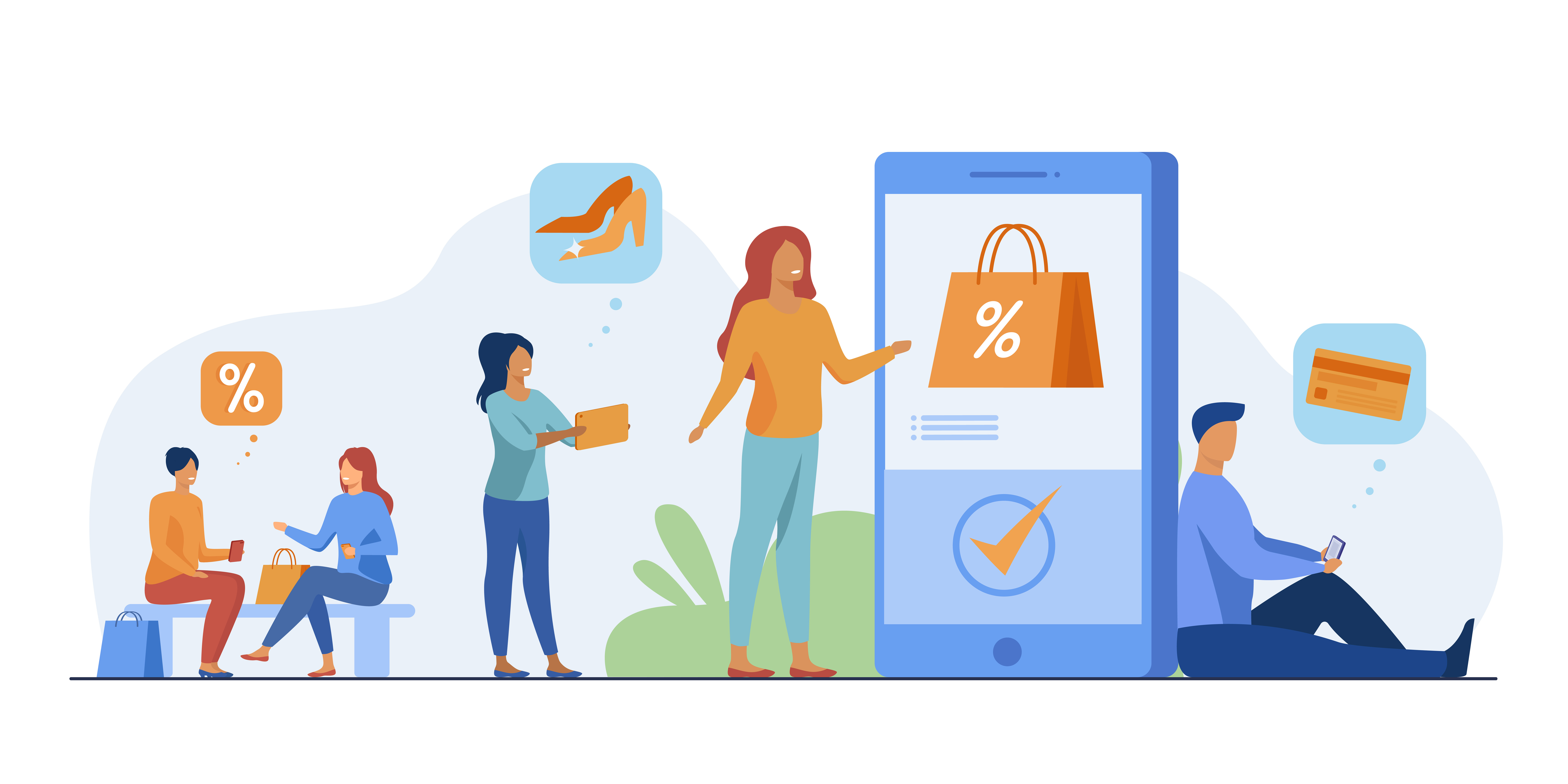Mobile Commerce has become the New Normal
11th of September, by Enroute

Like any other aspect in modern life, mobile devices and digitalization are also changing the way we buy – where we buy, how we buy and what we buy. Electronic commerce has become very complex over time and has developed into one of the core business models on the internet. In 2021 the revenues of the e-commerce sector amounted to 1.9-trillion US-Dollars worldwide. The largest share with a total amount of 570 billion Euro is constituted by the fashion segment of which a very significant proportion is represented by the global Player Amazon which generated 469 billion Euros of revenues. The same year there were over 3,6 billion e-commerce users around the world.
The global E-commerce is mainly driven by M-commerce, which according to Statista controlled nearly 72% of the global retail e-commerce sales in 2021. Mobile commerce refers to all forms of electronic commerce using wireless communication and mobile devices like cellphones and tablets. It is getting more and more popular and represents a growing trend worldwide. In the field of e-commerce, users are mostly tied to a fixed computer or at least one laptop and are therefore surfing online especially at home or at work. M-commerce breaks this barrier, as users can now access all information available online without restriction while on the move. The sales in the retail M-commerce in the USA alone are projected to exceed $430 billion this year and $710 in 2025. An estimated number of 187 million mobile shoppers will contribute to that growth by 2024. However, m-commerce is not limited by “shopping” per se. It also includes food and grocery orders as well as hotel and flight bookings.
The most popular way to shop online is via a mobile retail app, which 85% of the US-consumers prefer over mobile websites. More than half of the US-population are using them straight away instead of the internet browser. The time spent on retail apps in 2022 reached over 100 billion hours globally! To stay competitive a mobile app is a must have for a business, as it is the future of m-commerce growth. The biggest advantage of it is the location independence. The customers can shop everywhere and at any time which enhances the customer retention and expands the possibilities where purchases can take place. You also get access to a much bigger market – especially among young people. The conversion rate of a mobile app is 157% higher than a mobile web session. Since users carry out their mobile devices with them all the time, retailers can easily send push notifications via a mobile app with real-time offers based on their location or behavior. This trend also comes along with the One-click ordering which simplifies the purchasing process and contributing to the much higher conversion rate. A mobile ecommerce app allows its users to store their customer information in their user profile enabling to complete the entire purchase process just within one click. Thus, while on mobile websites the abandonment rate of purchases amounts to 97%, it is 68% for desktop websites and just 20% for mobile apps.
Another major trend in the m-commerce sector is called social commerce meaning that brands and retailers can tag products on social media and which are directly linked to their shopping platform. So, while scrolling through their Instagram, facebook or tiktok the customer can just click on the product on the photo and can immediately buy it without having to open a new browser or being navigated to a website. All the customer information is again stored in the app which enables a one-click-purchasing experience. A study says that brands using Instagram as a shopping platform gained a traffic boost of about 2% and received a 20% increase in revenue.
Besides the social commerce, the future of m-commerce will also be dominated by voice shopping and chatbots. Within the last four years, voice shopping has increased by 1900% and is expected to reach $40 billion this year. Half of the customers use voice search to research products, 36% use it to add goods to their shopping basket and 30% use it to track their packages. Already today 22% of the consumers use it to actually buy a product. Also chatsbots will continue to grow in the future. About 54% of the people say that they will always prefer a chatbot over a human salesperson if it saves them time.
Besides this, mobile shopping apps have also implemented Augmented and Virtual Reality allowing customers to, for example, project a sofa into their home to see what it would look like. These technologies enable endless opportunities and will put the customer experience to a next level. By 2025 the AR and VR industry is expected to be worth $35 billion.
Due to all these trends and possibilities mobile commerce is rapidly expanding and will dominate the ecommerce in the near future. Driven by the digitalization and access to high-speed-internet m-commerce will continue to gain market share. It enables an easy, innovative and intuitive way of shopping based on technologies like AR and VR and new shopping channels like social commerce which will greatly improve the customer experience in the future.
